We will explore the book “Hyperfocus” by Chris Bailey, an excellent resource for individuals struggling with focus-related challenges.
The book provides comprehensive insights into productivity, and by implementing its teachings, readers can learn to achieve more with less effort and manage their time more efficiently. This summary is organized into five parts, and it’s crucial to read it thoroughly to understand the concept fully. Let’s begin.
1. The four types of tasks
Managing your attention is comparable to selecting content to view on Netflix. When you access the website, you’re presented with a homepage that showcases a limited number of available shows.
This homepage represents a point where the path ahead forks, with numerous options. Each path on Netflix can elicit different responses, including entertainment, education, or contentment.
The decision of where to focus our attention presents us with multiple options and pathways to explore. However, the sheer number of possibilities in our external environment can be overwhelming. Therefore, choosing the most significant object to direct our attention to and sustaining that focus throughout the day is crucial. This decision can have significant consequences for our productivity and achievements.
In this context, we can classify work into four types: necessary work, unnecessary work, distracting work, and purposeful work. Necessary work refers to unattractive but productive tasks like attending team meetings or budget calls. Completing these tasks often requires pushing ourselves to do them.
On the other hand, unnecessary work involves unproductive and unattractive tasks, like rearranging papers on the desk or computer files. Engaging in such tasks keeps us busy but doesn’t lead to accomplishments. It can be considered a form of laziness that hinders our productivity.
Distracting work refers to vital but unproductive tasks, such as scrolling through social media or browsing news websites. Managing our attention effectively can help us reduce our time on such distractions. Lastly, purposeful work involves tasks that align with our goals and values and contribute to our personal growth and development.
Deciding where to direct our attention can significantly affect our productivity and achievements. Classifying work into necessary, unnecessary, distracting, and purposeful categories allows us to prioritize our tasks and manage our attention more effectively.
Purposeful work includes:
- Tasks we are put on the Earth to do.
- The jobs we are most engaged in as we do them.
- The mission with which we make the most significant impact.
Tasks falling under the category of purposeful work usually require more cognitive effort, and we are often more skilled at performing them. For instance, an actor’s most crucial purposeful task might involve rehearsing and performing, while a financial advisor’s intended duties could be making investments and meeting with clients.
It is ideal for focusing primarily on necessary and purposeful work to increase productivity. One way to achieve this is by dividing work tasks into the four categories mentioned above, which can help bring awareness to what is essential in our work. This simple activity can significantly improve productivity by helping us prioritize our tasks and focus on what truly matters.
2. The limits of your attention
(a) “Attentional space” refers to the mental capacity to focus on and process information at any moment. It is the term used to describe the amount of space in our short-term memory that holds everything we are currently aware of. Like a computer’s RAM, our attentional space allows us to work with and actively maintain the information we focus on.
(b) Our daily tasks can be categorized into habits and complex tasks. Habits are repetitive actions that we can perform efficiently with minimal attentional space, while complex tasks require dedicated focus to complete correctly. Although experts argue that multitasking is impossible, it is valid for habits. For example, we can walk, breathe, and chew bubble gum while listening to an audiobook without compromising the quality of our actions. Therefore, tasks that pair well with habits can be multitasked without affecting their quality, while complex tasks require our undivided attention to complete successfully.
(c) The Power of Focused Attention
When we focus our attention on one task, we practice mindfulness. Mindfulness is a powerful tool to help us stay present at the moment and concentrate on the task at hand. By focusing on one thing, we can achieve a state of flow, a mental state where we are fully immersed in what we are doing.
Focused attention is also the key to productivity. Focusing on one task makes us more likely to complete it quickly and accurately. On the other hand, when we try to do multiple things at once, we may end up making mistakes, which can take even longer to fix.
To harness the power of focused attention, eliminating distractions is essential. Turn off notifications on your phone or computer, close unnecessary tabs or apps, and let others know you need uninterrupted time to work.
In conclusion, attention is a limited resource, and it’s crucial to use it wisely. By understanding our attentional space, selecting tasks that pair well, avoiding attention overload, and harnessing the power of focused attention, we can make the most of our mental resources and achieve our goals.
3. The power of Hyperfocus
What is Hyperfocus?
Have you ever had a super productive workday where you accomplished a lot? If so, it’s likely because you were focusing on one task and avoiding distractions that could pull you away from it. You could quickly refocus when your attention wandered, and you were working on a task that was neither easy nor hard. This state of productivity is known as Hyperfocus, which involves being wholly immersed in your work and allowing fewer objects into your attentional space.
To achieve Hyperfocus, you need to follow four stages as you begin to focus. The first step is to choose a productive or meaningful object of attention. Selecting a worthwhile task to maximize your actions’ productivity is essential.
The second stage involves eliminating as many distractions as possible. Distractions can pull you out of Hyperfocus and reduce your productivity, so it’s crucial to minimize them as much as possible.
Once you’ve eliminated distractions, you can move on to stage three, which involves focusing on your chosen object of attention. This requires dedicating your full attention and energy to the task, allowing you to enter Hyperfocus.
Finally, stage four involves continually drawing your focus back to that subject of attention. This is important because your mind may naturally wander, but you must refocus quickly to maintain Hyperfocus and maximize productivity.
Step 1. Setting an intention for what you plan to focus on is the most crucial step in entering Hyperfocus. The more productive and meaningful the task, the more productive and meaningful your actions become. By following these four stages and setting a clear intention, you can achieve Hyperfocus and accomplish a great deal quickly.
Step 2. The second step towards achieving Hyperfocus is minimizing internal and external distractions as much as possible. Distractions can appeal to us because they can be more interesting than the task we are working on. However, distractions are easier to deal with proactively. Once they occur, it can be challenging to regain our focus.
Step 3. The third step in achieving Hyperfocus is focusing on our chosen object of attention for a set period. This involves allocating a specific amount of time to the object we wish to concentrate on and committing to focusing on it during that time.
Step 4. The fourth and final step in achieving Hyperfocus is redirecting our attention back to the original object of attention when our mind inevitably wanders.
So, how can we select the proper object of attention to enter into Hyperfocus mode? Here are three approaches to establishing powerful intentions.
(1) The rule of three
The rule of three means choosing three things you want to complete by the end of each day. These three intentions should be reserved for the most crucial daily tasks.
(2) Prioritize consequential tasks
If you have a habit of maintaining a to-do list, consider the impact of each task. How will completing each task change your world, work, or life?
(3) The hourly awareness chime
While setting three daily intentions and prioritizing consequential tasks are helpful, how can you ensure you are intentional in your work every moment? Set an hourly timer on your phone or another device that reminds you to ask yourself:
Was my mind wandering when the awareness chime rang?
Am I focused on a productive task? If so, how long have I been concentrating on it?
How much space does my attention have? That is, what other activities are I doing while working?
Now that we know how to set intentions let’s discuss dealing with distractions while in Hyperfocus mode.
4. Taming Distractions
In the previous section, we discussed two types of work tasks: productive tasks that serve a purpose and unproductive tasks that are a hindrance or a diversion. Now, let’s turn our attention to unproductive tasks and classify them based on whether we can manage them and whether we find them enjoyable or bothersome.
In the previous section, we discussed the different types of distractions and how to control them. We can categorize distractions based on whether we can control them and whether we find them annoying or enjoyable. Most distractions fall into the category of ones we can control. For instance, we can eliminate distractions caused by the internet to enable us to hyperfocus on our essential tasks. Here are some suggestions to help you create a distraction-free environment:
First, you can put your phone in “do not disturb” mode and keep it in another room to avoid checking it. Studies have shown that when a distraction is about 20 seconds away, it provides enough distance for us not to fall victim to it and to control our impulses better. Second, when you have small breaks, try to use them to reflect on your actions and how you can improve your life instead of tapping around on your smartphone.
Third, you can use aeroplane mode to prevent distractions while working on essential tasks or having a coffee with someone. Fourth, you can create a “mindless” folder on your phone to house your most distracting apps. The folder’s name will remind you that you are about to distract yourself. Finally, you can expand the size of your attentional space, which is determined by a measure known as “working memory capacity.”
The greater your working memory capacity, the more information you can hold in your mind simultaneously and the more effectively you can process complex tasks. Expanding your attentional space has several benefits, such as getting back on track quickly after your mind wanders or you become distracted. One proven practice to increase working memory capacity is meditation. Breathing meditation involves observing the characteristics of your breath, such as which side it is coming from. When your mind wanders, you return to the details of your breath, which increases your control over your attention.
Meditation is not the only tool for expanding your attentional space. Practising mindfulness is another proven way. Mindfulness involves becoming aware of what is filling your mind. You can practice mindfulness by intentionally being present for a minute or two while performing a daily task that doesn’t consume your complete attention, such as showering.
By following these habits, you can achieve great heights in your ability to hyperfocus and complete your most important tasks.
Hyperfocus Book Review
As a reader of Hyperfocus by Chris Bailey, I found this book an incredibly insightful and practical guide to improving productivity and focus in today’s fast-paced world. Bailey’s research-based approach to mastering attention management provides valuable tools and techniques to help readers work smarter and achieve more.
The book explores the concept of hyperfocus, a state of heightened concentration that allows us to immerse ourselves in a task and maximize our productivity fully. Bailey explains the science behind hyperfocus and provides actionable strategies for entering this state and maintaining it for extended periods.
One of the most valuable aspects of Hyperfocus is its emphasis on balancing focused work with deliberate rest and relaxation. By managing our attention effectively, we can enhance our creativity, reduce stress, and ultimately lead a more fulfilling life.
Throughout the book, Bailey shares practical tips and exercises to help readers develop attention management skills. As I implemented these strategies, I noticed a significant improvement in my productivity, focus, and overall well-being.
In conclusion, Hyperfocus is a must-read for anyone looking to boost their productivity and take control of their attention in a world filled with distractions. Chris Bailey’s research-based insights and practical advice have the potential to transform the way we work and live, leading to greater success and satisfaction.
Our summaries are also available on all Podcast platforms, named “Kitabein,” which recently won India’s best educational podcast award.
Contents
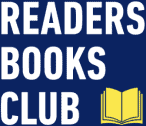
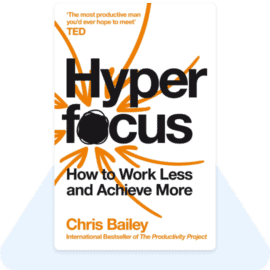

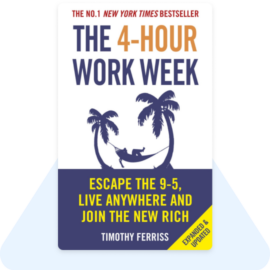
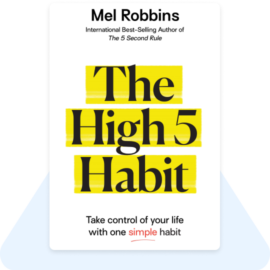
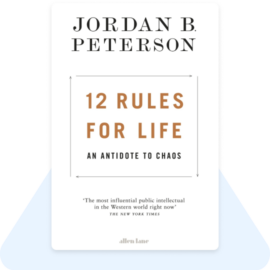
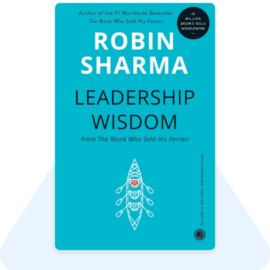

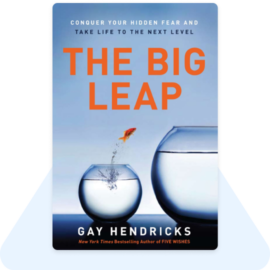
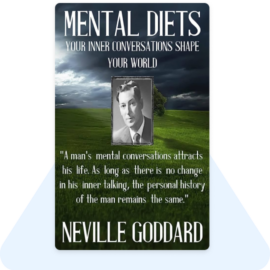
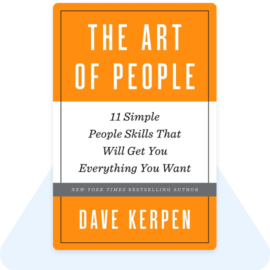
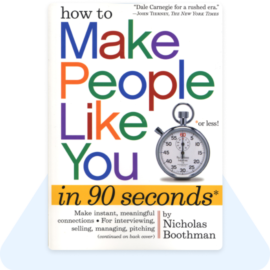
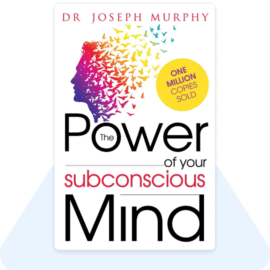
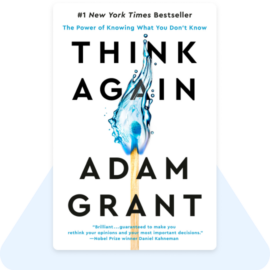
This book is really good and help us to move away from distraction an d focus in important things. I think if we use this method and make it a habbit then no doubt It would do wonder for us.
Thanks 8th day t
Day 8, Hyperfocus, by Chris Bailey.
The difference between a successful and an unsuccessful person is not lack of time but lack of focus.
Make a to do list. Keep the most important task at top and make a plan to achieve your goal.
Thank you Amit sir and RBc.
My previous comment is not visible.